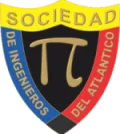Curador Uno de Barranquilla¿Quién es el Curador Urbano
El Curador Urbano es un particular encargado de estudiar, tramitar y expedir licencias urbanísticas de parcelación, subdivisión, urbanización de predios así como de licencias de demolición y construcción de edificaciones, a petición del interesado en adelantar proyectos de edificación. Dentro de su labor debe verificar y comprobar que los proyectos sometidos a su consideración, cumplan con las normas urbanísticas y de sismo resistencia vigente, solamente cuando la solicitud se ajuste a dichas normas se expedirá la correspondiente licencia.

Perfil Curador Urbano 1 de Barranquilla
Arquitecto Guillermo Enrique Ávila Barragán
Arquitecto con 22 años de experiencia profesional, egresado de la universidad de los Andes, magíster en planeación urbana y regional de la Pontificia Universidad Javeriana, master en gestión de zonas costeras y estuaricas de la Universitat Politécnica de Catalunya con experiencia en urbanismo, planeación, espacio público, ordenamiento territorial, gestión del riesgo, gestión predial y normatividad urbana, así como en la gestión de proyectos urbanos y arquitectónicos.

¿Cuáles son sus principales,
funciones
Los curadores urbanos tienen como fin agilizar los procedimientos de solicitud y expedición de licencias urbanísticas y descongestionar las oficinas de planeación ejerciendo su función en la totalidad del territorio municipal o Distrital, o dentro de las zonas o áreas del municipio o distrito que le hayan sido asignadas.
Periodo del
Curador Urbano
Los curadores urbanos serán designados para períodos individuales de cinco (5) años y podrán ser designados nuevamente, siempre y cuando participe y gane el concurso de méritos respectivo en los términos y procedimientos que reglamente el Gobierno nacional y no se encuentre inmerso en alguna de las causales de inhabilidad, incompatibilidad e impedimentos descritos en la ley.
Mediante el Decreto 0156 del 5 de agosto de 2021 el Arq. Guillermo Ávila Barragán fue designado como Curador Urbano No. 1 de Barranquilla, tomando posesión del cargo el día 7 de septiembre de 2022.










